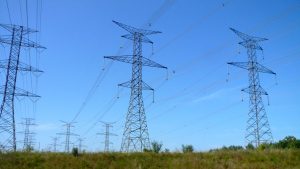The decarbonization of construction is an inevitable part of the industry’s future. Focus is often placed on embodied carbons and the emissions associated with delivery and construction processes.
At the same time, operational carbons once buildings are occupied are also a point of attention. These are influenced, of course, by occupancy behaviour in combination with the design of the project, whether it’s new construction or the repurposing of an existing building.
Leadership to cut building emissions comes from various sources. In California, for example, the Building Decarbonization Coalition has outlined a plan to reduce emissions by 40 per cent by 2030 and to have zero emission codes in place for commercial buildings by 2027.
However, as business management guru Peter Drucker famously said, “If you can’t measure it, you can’t manage it.”
That’s where digital twins (DTs) come into the picture.
The Digital Twin Consortium defines a digital twin as, “a virtual representation of real-world entities and processes, synchronized at a specified frequency and fidelity.”
In practise, DTs collect data from all manner of sensors and then recreate the building in a virtual form that can be not only monitored in real time but also manipulated in order to study changes in behaviour and building interaction.
DTs have value even before projects commence. John Burton, CEO of UrsaLeo, a digital transformation solution company based in San Francisco, told IIoT World that DTs can “reduce construction mistakes by giving the workers a digitally visual plan of building architecture, which saves on time and energy costs.”
And as emissions from operations gain critical interest today, digital twins can again play a key role.
According to a report published by EY, the international tax and business consultancy once known as Ernst & Young, “The aggregated data conducts simulations using physics-based modelling to run ‘what-if’ scenarios to optimize performance. Digital data is then able to deliver actionable insights geared toward efficiency while reducing wasted resources. The adoption of a digital twin can reduce real estate operating costs by up to 35 per cent, while at the same time decreasing carbon emissions, delivering a healthier workplace and enhancing the user experience.”
EY references a 10-year, two-phase study using digital twin technology conducted by Nanyang Technological University (NTU). NTU is a pioneer in academia for promoting smart technologies and infrastructure that promotes itself as the greenest campus in the world.
Solutions identified during phase one saw campus energy consumption reduced by 21 per cent, carbon emissions reduced by 8.2 kilo-tons and $3.9 million in cost savings. After completing phase two, energy consumption was reduced by 31 per cent, carbon emissions reduced by 9.6 kilo-tons and $4.7 million in cost savings over the 10-year period, thus placing NTU on track towards achieving carbon neutrality.
On an urban level, there have been recent announcements of note.
Los Angeles’ Better Buildings Challenge, a community of building owners representing 150 million square feet of commercial real estate space committed to going green, has partnered with DT pioneer Cityzenith to explore ways of reducing carbon emissions in the city’s Bunker Hill district.
“We are excited to be working in America’s second largest city, a long-time champion of green buildings,” Michael Jansen, CEO and Founder of Cityzenith said. “We have to decarbonize almost six million buildings in America in the next 10 years and didn’t have the technological tools for that until today.”
Cityzenith will expand its Urban Digital Twins program, Clean Cities – Clean Future, to as many as 15 major cities in 2022 to help commercial building owners discover ways to dramatically reduce carbon emissions and move towards better sustainable building practices, the company says.
The coalition of building owners in Los Angeles believes their initiative will support an overall shift to net-zero building operations and help develop strategies that will impact future policies and financial solutions.
Jansen believes the result will also support the thesis that net-zero buildings cost less to operate, and can attract higher rents and valuations.
John Bleasby is a Coldwater, Ont.-based freelance writer. Send comments and Inside Innovation column ideas to editor@dailycommercialnews.com










Recent Comments
comments for this post are closed